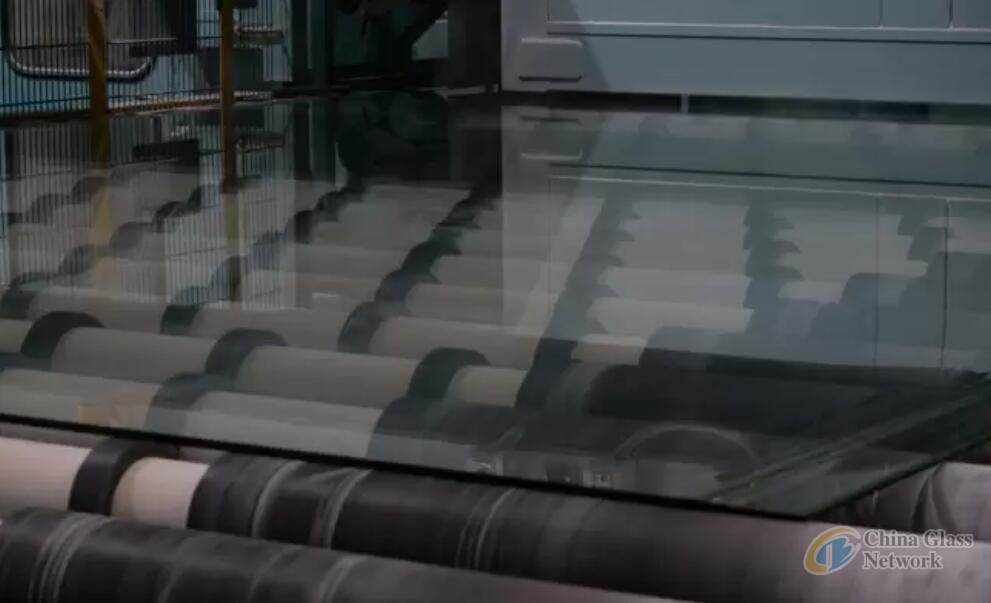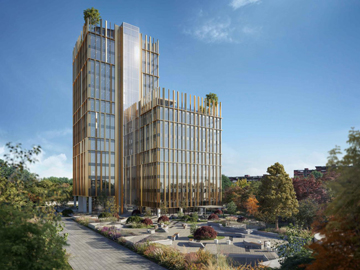Post Time:Jun 14,2023Classify:Company NewsView:1460
Six months ago at its site in Moustier, Belgium, AGC Glass Europe started production of Low-Carbon Planibel Clearlite, a float glass whose CO2 footprint has been slashed by more than 40 percent. The production of Low-Carbon Planibel Clearlite yields no more than 7 kilograms of CO2 per square metre for glass that is 4 millimetres thick.

Now, the AGC site in Seingbouse, France, has also started producing this same sustainable glass product, marking the next step in the planned long-term Group-wide roll-out. With this additional production capacity now online, AGC has expanded its Low-Carbon Glass range to include a Low-Carbon variant of Stratobel (safety glass), Stratophone (acoustic glass), iplus (thermal insulation glass), Stopray and Energy (solar control glass), as well as toughenable coatings (T-coatings). The entire range is now available in all thicknesses from 3 to 10 millimetres.
AGC Glass Europe has taken the next step in its Carbon Neutrality Roadmap by enabling another AGC production facility to produce Low-Carbon Glass. The Group’s holistic approach takes the entire value chain into account: decarbonising production processes, reducing CO2 emissions from the upstream supply chain and cutting other indirect emissions. AGC is effectively leveraging the more sustainable procurement of raw materials, the use of highly efficient melting furnaces that deploy innovative electro-boosting technology, the increased use of recycling via intelligent pre-consumer cullet flows and optimised transport between AGC plants and customers. The Group also promotes the use of renewable energy by not only purchasing green energy but also generating its own green solar and wind power.
Investors opt for sustainable building projects
Investors and building owners are increasingly demanding that sustainable materials be used in their projects. Sustainable buildings have a smaller ecological footprint, minimise the consumption of non-renewable resources and reduce greenhouse gas emissions. During the construction phase various aspects have to be considered, such as the use of decarbonised materials, recyclability, the reusability of building components and the reduction of waste, both during the construction process and beyond the building’s life cycle.
There are also financial arguments for investors and owners: healthy and ecological buildings deliver higher rents and sales prices, which in turn expands the potential for a long-term increase in the value of the investment. Accordingly, by pursuing sustainable asset portfolios, investors and fund managers can tackle their scope 3(1) goals, such as tenant emissions and embodied carbon, and improve their ESG credentials.
For AGC Glass Europe, the growing demand for sustainable and decarbonised construction is already being reflected in the first projects specifying AGC Low-Carbon Glass:
UMC Research & Diagnostics Centre, Amsterdam, The Netherlands
UMC Amsterdam has a new research and diagnostics centre, for which they specified 1,600 square metres of Low-Carbon ipasol Ultraselect 62/29 (solar control glass) and Low Carbon Planibel Clearlite (single glass).

Nervesa 21, Milan, Italy
This 10,000 square metre Grade A building in Milan is aiming for the highest ESG credentials and circular economy practices in a sustainable refurbishment process that involves recycling more than 90 percent of the materials removed during the renovation process and sourcing local materials. Some 6,500 square metres of Low-Carbon Stratophone 66.2 and Low-Carbon Planibel Clearlite will be supplied.
Mobilis, Brussels, Belgium
Redevelopment project by D’Ieteren Immo to create a multifunctional, innovative, flexible and sustainable building that will be both energy-neutral, with BREEAM Outstanding certification, as well as climate-proof. The façade will comprise Low-Carbon Stratobel 44.2 and Low-Carbon Stratophone 44.2.
NDR Fernsehen, Hamburg, Germany
Around 2,000 square metres of Low-Carbon Stratobel iplus 1.1 and Low-Carbon Energy 72/38 were used in the façade of the new NDR programme building in the Lokstedt district of Hamburg.
AGC’s Low-Carbon Glass is identical to the Group’s conventional glass in terms of quality, aesthetics and technical values, but around 40 percent less CO2 is generated during the production process. Interested readers can find additional information at www.agc-yourglass.com.
Source: glassonlineAuthor: shangyi